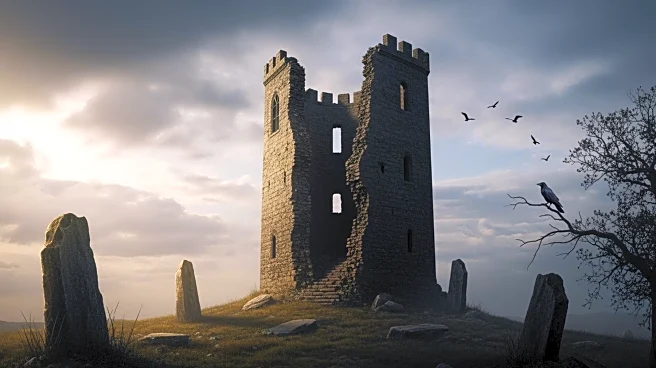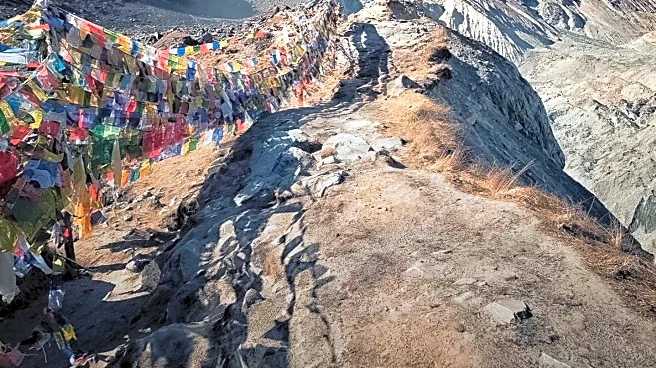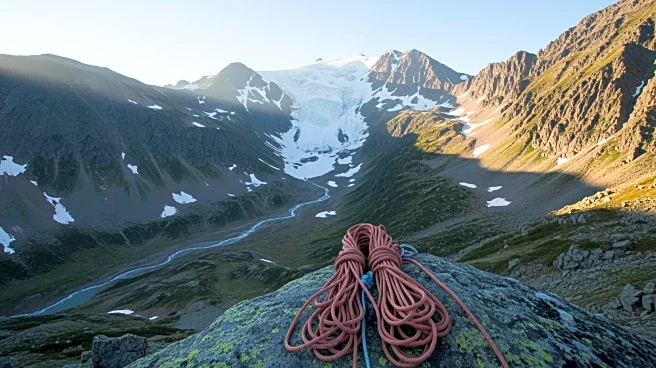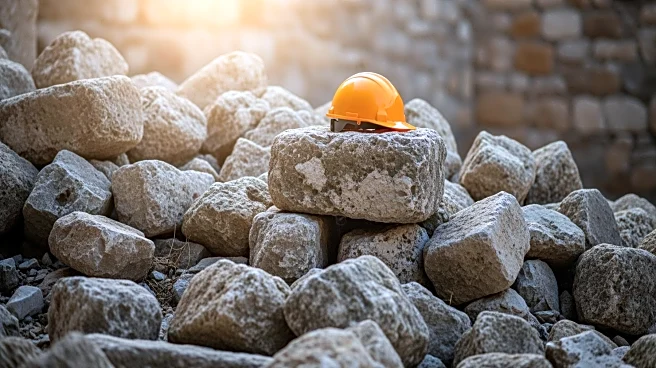What's Happening?
An avalanche in the Himalayas has claimed the lives of at least seven climbers, including guides, as it swept through their campsite. The incident left survivors trapped under 15-20 feet of snow, necessitating rescue operations. The climbers hailed from
various nationalities, highlighting the international nature of mountaineering expeditions in the region. The avalanche occurred in a popular climbing area, known for its challenging conditions and unpredictable weather patterns. Rescue teams are working to locate and assist any remaining survivors, while efforts are underway to recover the bodies of those who perished.
Why It's Important?
The tragic event underscores the inherent risks associated with high-altitude mountaineering, particularly in regions like the Himalayas where weather conditions can change rapidly. The loss of life serves as a stark reminder of the dangers faced by climbers and guides, who often navigate treacherous terrain in pursuit of their passion. This incident may prompt discussions on improving safety measures and protocols for expeditions, potentially influencing regulations and guidelines for mountaineering activities. The international nature of the climbing community means that the impact of such tragedies resonates globally, affecting families, friends, and fellow climbers across different countries.
What's Next?
Rescue operations will continue as authorities work to ensure the safety of any remaining survivors and recover the bodies of those who died. The incident may lead to increased scrutiny of safety practices in the mountaineering industry, with calls for enhanced training and equipment standards. Governments and climbing organizations may collaborate to develop more comprehensive safety protocols to prevent future tragedies. Additionally, the event could influence insurance policies and coverage for climbers, as stakeholders assess the risks associated with high-altitude expeditions.
Beyond the Headlines
Beyond the immediate tragedy, the avalanche highlights broader issues related to climate change and its impact on mountainous regions. As global temperatures rise, the stability of snow and ice in high-altitude areas may be compromised, increasing the likelihood of avalanches. This could lead to long-term changes in mountaineering practices, as climbers and guides adapt to evolving environmental conditions. The incident also raises ethical questions about the commercialization of mountaineering, as the pursuit of adventure and profit may sometimes overshadow safety considerations.















